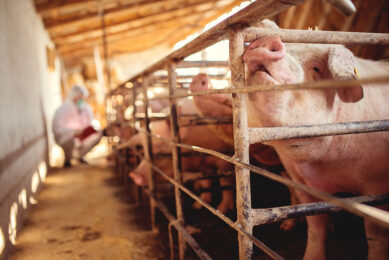UK: Cool sows to improve farrowing rate
New research from the University of Leeds has shown that farrowing rates are reduced when average daily temperature rises above 18°C. These are the initial findings on factors that contribute to seasonal infertility in outdoor sows – published in a new BPEX 2TS Research into Action factsheet.
Previous research has failed to provide a definitive answer as to how environmental factors affect pig production and when seasonal infertility is likely to occur on a unit.
The University of Leeds has analysed a large set of UK outdoor sow production data in relation to weather data and geographical location.
It has shown that several days of warm weather with an average daily temperature above 18°C, during lactation and around weaning, results in lower and more variable farrowing rates than when temperatures are below 18°C.
BPEX knowledge transfer manager Colin Stone said: “Sow heat production increases as lactation progresses, in line with increasing milk production. Therefore heat production, and so susceptibility to developing heat stress, is greatest just before weaning.
“This research suggests that cooling facilities should be provided to outdoor sows when daily average temperature rises above 18°C.”
Management guidelines for producers are provided in the factsheet and include:
• Monitor sow feed intake in warm weather. If sows are not eating, take steps to cool them down or provide more energy-dense feed
• Provide wallows early on in the year as well as throughout summer, or sprinklers for sows to cool down in
• Paint farrowing arcs white to reflect sunlight and reduce the temperature inside; painting huts white can reduce internal arc temperatures by around 7ºC.
•
For a copy of the factsheet 2TS Research into Action no. 10: Seasonality in Pigs, click here. http://www.bpex.org.uk/2TS/breeding/resources.aspx
The project will continue until September 2012 and provide more information on how topography and staffing patterns could also affect seasonal infertility.
Source: BPEX
http://www.bpex.org.uk
http://www.bpex.org.uk











